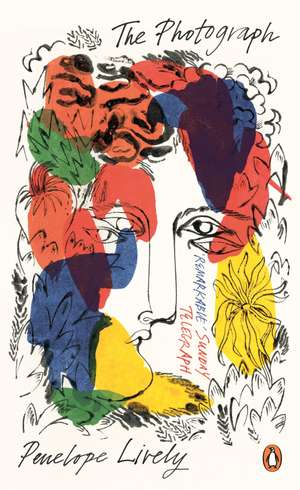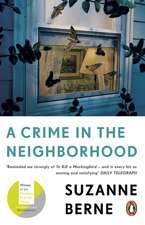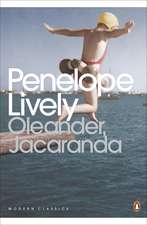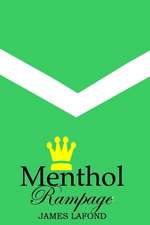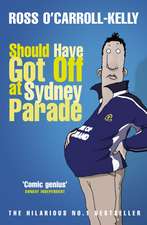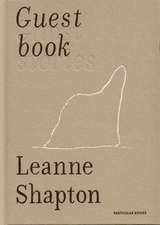The Photograph: Penguin Essentials, cartea 111
Autor Penelope Livelyen Limba Engleză Paperback – 5 iun 2019
The words on the envelope he has found are written in Kath's hand, but Glyn ignores his wife's instruction and breaks the seal. His life unwinds. For he finds a photograph showing Kath holding hands with another man. Unable to forget this long-ago act of betrayal he recklessly excavates the past, seeking out who knew what, tearing apart other lives as he tries to dig up the roots of his wife's infidelity. But what is the truth about Kath? What is the truth about their love? And can it survive this?
'Remarkable' Sunday Telegraph
| Toate formatele și edițiile | Preț | Express |
|---|---|---|
| Paperback (2) | 48.06 lei 23-34 zile | +18.98 lei 6-10 zile |
| Penguin Books – 5 iun 2019 | 48.06 lei 23-34 zile | +18.98 lei 6-10 zile |
| Penguin Books – 30 apr 2004 | 115.07 lei 3-5 săpt. |
Din seria Penguin Essentials
-
 Preț: 60.81 lei
Preț: 60.81 lei -
 Preț: 67.94 lei
Preț: 67.94 lei - 21%
 Preț: 48.67 lei
Preț: 48.67 lei - 21%
 Preț: 47.94 lei
Preț: 47.94 lei - 58%
 Preț: 48.31 lei
Preț: 48.31 lei - 19%
 Preț: 56.62 lei
Preț: 56.62 lei -
 Preț: 67.82 lei
Preț: 67.82 lei - 20%
 Preț: 55.06 lei
Preț: 55.06 lei -
 Preț: 61.06 lei
Preț: 61.06 lei - 28%
 Preț: 49.49 lei
Preț: 49.49 lei - 22%
 Preț: 47.34 lei
Preț: 47.34 lei -
 Preț: 67.95 lei
Preț: 67.95 lei - 29%
 Preț: 48.30 lei
Preț: 48.30 lei - 20%
 Preț: 49.53 lei
Preț: 49.53 lei - 21%
 Preț: 53.24 lei
Preț: 53.24 lei - 21%
 Preț: 48.00 lei
Preț: 48.00 lei - 30%
 Preț: 46.73 lei
Preț: 46.73 lei - 22%
 Preț: 47.81 lei
Preț: 47.81 lei - 20%
 Preț: 49.17 lei
Preț: 49.17 lei - 23%
 Preț: 46.60 lei
Preț: 46.60 lei -
 Preț: 67.82 lei
Preț: 67.82 lei - 19%
 Preț: 50.60 lei
Preț: 50.60 lei - 23%
 Preț: 46.43 lei
Preț: 46.43 lei -
 Preț: 60.63 lei
Preț: 60.63 lei - 22%
 Preț: 47.06 lei
Preț: 47.06 lei - 29%
 Preț: 48.34 lei
Preț: 48.34 lei - 21%
 Preț: 54.29 lei
Preț: 54.29 lei - 22%
 Preț: 47.83 lei
Preț: 47.83 lei - 21%
 Preț: 53.44 lei
Preț: 53.44 lei - 18%
 Preț: 57.26 lei
Preț: 57.26 lei - 20%
 Preț: 49.04 lei
Preț: 49.04 lei - 22%
 Preț: 53.07 lei
Preț: 53.07 lei - 21%
 Preț: 48.77 lei
Preț: 48.77 lei - 20%
 Preț: 55.06 lei
Preț: 55.06 lei - 21%
 Preț: 48.63 lei
Preț: 48.63 lei - 19%
 Preț: 51.06 lei
Preț: 51.06 lei -
 Preț: 68.42 lei
Preț: 68.42 lei - 22%
 Preț: 47.46 lei
Preț: 47.46 lei - 28%
 Preț: 49.20 lei
Preț: 49.20 lei - 20%
 Preț: 55.43 lei
Preț: 55.43 lei - 21%
 Preț: 53.67 lei
Preț: 53.67 lei - 21%
 Preț: 48.51 lei
Preț: 48.51 lei - 22%
 Preț: 46.78 lei
Preț: 46.78 lei -
 Preț: 108.25 lei
Preț: 108.25 lei - 29%
 Preț: 48.31 lei
Preț: 48.31 lei - 21%
 Preț: 53.77 lei
Preț: 53.77 lei - 21%
 Preț: 48.80 lei
Preț: 48.80 lei - 20%
 Preț: 49.00 lei
Preț: 49.00 lei - 20%
 Preț: 49.37 lei
Preț: 49.37 lei
Preț: 48.06 lei
Preț vechi: 61.06 lei
-21% Nou
Puncte Express: 72
Preț estimativ în valută:
8.50€ • 9.97$ • 7.47£
8.50€ • 9.97$ • 7.47£
Carte disponibilă
Livrare economică 16-27 ianuarie 26
Livrare express 30 decembrie 25 - 03 ianuarie 26 pentru 28.97 lei
Preluare comenzi: 021 569.72.76
Specificații
ISBN-13: 9780241986486
ISBN-10: 0241986486
Pagini: 240
Dimensiuni: 111 x 181 x 15 mm
Greutate: 0.13 kg
Editura: Penguin Books
Colecția Penguin
Seria Penguin Essentials
Locul publicării:London, United Kingdom
ISBN-10: 0241986486
Pagini: 240
Dimensiuni: 111 x 181 x 15 mm
Greutate: 0.13 kg
Editura: Penguin Books
Colecția Penguin
Seria Penguin Essentials
Locul publicării:London, United Kingdom
Notă biografică
Penelope
Lively
has
written
many
prize-winning
novels
for
adults
and
children.
They
include
The
Road
to
Lichfield,
According
To
Mark.
Moon
Tiger
(which
won
the
1987
Booker
Prize),
Heatwave
and
Spiderweb.
Penelope
Lively
lives
in
London
N1.
Recenzii
"One of Lively’s most satisfying novels: cleverly conceived, artfully constructed and executed with high intelligence and sensitivity." —Los Angeles Times
"An ingenious premise for a novel and Penelope Lively... spins it out with expert skill." —The Washington Post
"Engrossing... engaging." —San Francisco Chronicle
"Lively’s [novel] maintains the high standard her fans have come to expect. It’s another shining winner." —The Boston Globe
"Original... bracingly intelligent. Rarely has a subject as elusive as life’s messiness been pursued with such unflagging rigor." —The Atlantic Monthly
"In her delicate, spot-on prose, Penelope Lively ruthlessly takes her microscope below the surface of two middle-class marriages and magnifies whatever it is that is left behind when passion is gone, when couples become immune to one another." —The Times (London)
"To read Penelope Lively's book is like slipping into the finest cashmere: beautifully wonven, fluid and expensive. Once experienced, it is impossible to enjoy inferior materials." —The Evening Standard (London)
"The Photograph is Penelope Lively's 14th novel, but she shows no sign of running out of inventiveness or of failing to write books that are hugely pleasurable to read. This one is deftly edged with humour." —Independent on Sunday (UK)
"An ingenious premise for a novel and Penelope Lively... spins it out with expert skill." —The Washington Post
"Engrossing... engaging." —San Francisco Chronicle
"Lively’s [novel] maintains the high standard her fans have come to expect. It’s another shining winner." —The Boston Globe
"Original... bracingly intelligent. Rarely has a subject as elusive as life’s messiness been pursued with such unflagging rigor." —The Atlantic Monthly
"In her delicate, spot-on prose, Penelope Lively ruthlessly takes her microscope below the surface of two middle-class marriages and magnifies whatever it is that is left behind when passion is gone, when couples become immune to one another." —The Times (London)
"To read Penelope Lively's book is like slipping into the finest cashmere: beautifully wonven, fluid and expensive. Once experienced, it is impossible to enjoy inferior materials." —The Evening Standard (London)
"The Photograph is Penelope Lively's 14th novel, but she shows no sign of running out of inventiveness or of failing to write books that are hugely pleasurable to read. This one is deftly edged with humour." —Independent on Sunday (UK)
Extras
Kath.
Kath steps from the landing cupboard, where she should not be.
The landing cupboard is stacked high with what Glyn calls low-use material: conference papers and student references and offprints, including he hopes an offprint that he needs right now for the article on which he is working. The strata in here go back to his postgraduate days, in no convenient sequential order but all jumbled up and juxtaposed. A crisp column of Past and Present is wedged against a heap of tattered files spewing forth their contents. Forgotten students drift to his feet as he rummages, and lie reproachful on the floor: 'Susan Cochrane's contributions to my seminar have been perfunctory …;’ Labelled boxes of photographs - Aerial, Bishops Munby 1979, Leeds 1985 -are squeezed against a further row of files. To remove one will bring the lot crashing down, like an ill-judged move in that game involving a tower of balanced blocks. But he has glimpsed behind them a further cache which may well include offprints.
On the shelf above he spots the gold-lettered spine of his own doctoral thesis, its green cloth blotched brown with age; on top of it sits a 1980s run of the Yorkshire Archaeological Journal. Come to think of it, the contents of the landing cupboard are a nice reflection of his own trade - it is a landscape in which everything co-exists, requiring expert deconstruction. But he does not dwell on that, intent instead upon this, increasingly irritating, search.
He tugs at a file to improve his view of what lies beyond and, sure enough, there is a landslide. Exasperated, he gets down on hands and knees to shovel up this mess, and suddenly there is Kath.
A brown foolscap-size wallet file, with her loopy scrawl across the flap: Keep!
She smiles at him; he sees her skimpy dark fringe, her eyes, that smile.
What is she doing here, in the middle of all this stuff that has nothing to do with her? He picks up the file, stares. He cannot think how it got here. Everything of hers was cleared out. Back then. When she. When.
Hang on, though. Here underneath it are a couple of folders, also with her handwriting: Recipes. Since when did Kath go in for serious cooking, for heaven's sake? He opens the folder, flicks through the contents. Indeed, yes - cuttings from newspapers and magazines in the late 1980s, but petering out fairly rapidly, which signifies. He investigates the second folder, which contains receipted bills, many of them red-flagged second demands, which signifies also, and an incomplete series of bank statements, indicating a mounting overdraft.
It would seem that this assortment of her things got pushed in with his papers by mistake during the big clearing-out operation. The hurried, distracted clearing-out operation. Elaine had volunteered to sort out and dispose of Kath's possessions. She missed this lot. And here they have lain ever since, festering.
Well no, not exactly festering, but turning a little brown at the edges, doggedly degrading away as is everything else in here, doing what inanimate objects do as time passes, preparing to give pause for thought to those whose business is the interpretation of vanished landscapes.
The wallet file is brown anyway, so degradation is not much apparent. He dumps the folders on the floor and goes to sit on the top step of the stairs, holding the file.
He opens it.
Not much inside. Various documents, and a sealed brown envelope containing something stiff. Glyn sets this aside and goes through the rest.
A jeweller's valuation for a two-strand pearl necklace and a pair of drop pearl earrings. Originally her mother's, he seems to remember. Kath wore the earrings a lot.
Her medical card. And her birth certificate. Aha! So this is where that was, the absence of which caused considerable nuisance back then, necessitating a visit to Somerset House. No marriage certificate, one notes. That too had gone missing, making difficulties. And is still lost, it would seem. Not that that is, now, a problem.
Her 0-level certificate. Seven subjects. A grades in all but one. Glyn scans this with some surprise. Well, well. Who'd have thought it?
The injunction on the file's flap was presumably to herself. This was the repository for items she knew that she must hang on to, but - knowing herself - that she knew she was only too likely to lose. He experiences a stir of fondness, which disconcerts him. And he has been entirely diverted from the hunt for that offprint, which is a matter of some urgency. Fondness is overtaken by annoyance; Kath is getting in the way of his work, which was not allowed, as she well understood.
There is also a National Savings Certificate for £5, bearing a date in the mid 1950s. When she was about eight, for heaven's sake. And some chequebook stubs and a Post Office savings book showing a balance of £14.58, and a clutch of letters, at which he glances. The letters are from Kath's mother, the mother who died when she was sixteen. Glyn sees no reason to be interested in these and pushes them back into the file unread.
He is left with a semi-opaque folder, which turns out to hold a sequence of studio portraits of Kath. She is looking at him in glossy black and white, now made entirely manifest. Young Kath. A backlit Kath with bare shoulders, head turned this way or that, eyes to camera or demurely lowered, provocative smile, contemplative sideways gaze. These would date from the aspiring actress days, long before he knew her. Very young Kath.
Glyn studies these photos for quite a while.
Kath.
He returns everything to the file. There is now just this brown envelope. He notices for the first time that something is written on it. In her hand. Lightly pencilled.
DON'T OPEN-DESTROY.
And for whom is this second instruction intended?
He opens the envelope. Within are a photograph and a folded sheet of paper. He looks first at the photograph. A group of five people; grass beneath their feet, a backdrop of trees. Two members of the group, a man and a woman, have their backs to the photographer. Of the other three, Elaine can be identified at once, visible between the two whose faces cannot be seen. Near to her stand another man and woman, whom Glyn does not recognize.
One of the back-turned pair is Kath - he would know that outline anywhere, that stance. The someone else, the man, is at first a bit of a teaser. Familiar, surely - the rather long dark hair, the height, a good head taller than Kath. A slightly hunched way of standing.
Glyn brings the photo closer to his face for more minute inspection. And then he sees. He sees the hands. He sees that Kath and this someone, this man, have their hands closely entwined, locked together, pushed behind them so that as they stand side by side in this moment of private intimacy, this interlocking of hands would be invisible to the rest of the group.
Except to the photographer, who may or may not have been aware of what had been immortalized - the freeze-frame revelation.
And now Glyn recognizes the someone, the man. It is Nick.
He turns to the folded piece of paper that accompanied the photograph. He feels as though gripped by the onset of some incapacitating disease, but this paper requires attention.
Handwriting. A brief message. ‘I can't resist sending you this. Negative destroyed, I'm told. Blessings, my love.'
No signature. None needed. Neither for Kath then, nor, now, for Glyn. Though confirmation is needed. Somewhere he will have an instance of Nick's handwriting. A signature. A letter from way back when he was a consultant, or some such nonsense, on that landscape history series Nick published and of which he endlessly and ignorantly enthused, as Nick always did.
The disease now has him by the throat. The throat, the gut, the balls. What he feels is ... well, what he experiences is the most appalling stomach-churning, head-spinning cauldron of emotion. Rage is the top-note - beneath that a seethe of jealousy and humiliation, the whole primed with some kind of furious drive and energy. Where? When? Who? Who took this photograph? Who presumably passed it on to Nick and destroyed the negative?
The telephone rings, down in his study. Such is Glyn's powered state, his consuming purpose, that he is at once on his feet and halfway down the stairs to pick it up and snap: 'I am not available. Sorry.'
I cannot be doing with you right now because I have just learned that the woman who was once my wife had an affair with her sister's husband apparently - at some time yet to be identified. I am evidently a dupe, a cuckold. My understanding of the past has been savagely undermined. You will appreciate that for the foreseeable future this requires all my attention.
The phone stops. Of course. The answerphone is on.
Kath steps from the landing cupboard, where she should not be.
The landing cupboard is stacked high with what Glyn calls low-use material: conference papers and student references and offprints, including he hopes an offprint that he needs right now for the article on which he is working. The strata in here go back to his postgraduate days, in no convenient sequential order but all jumbled up and juxtaposed. A crisp column of Past and Present is wedged against a heap of tattered files spewing forth their contents. Forgotten students drift to his feet as he rummages, and lie reproachful on the floor: 'Susan Cochrane's contributions to my seminar have been perfunctory …;’ Labelled boxes of photographs - Aerial, Bishops Munby 1979, Leeds 1985 -are squeezed against a further row of files. To remove one will bring the lot crashing down, like an ill-judged move in that game involving a tower of balanced blocks. But he has glimpsed behind them a further cache which may well include offprints.
On the shelf above he spots the gold-lettered spine of his own doctoral thesis, its green cloth blotched brown with age; on top of it sits a 1980s run of the Yorkshire Archaeological Journal. Come to think of it, the contents of the landing cupboard are a nice reflection of his own trade - it is a landscape in which everything co-exists, requiring expert deconstruction. But he does not dwell on that, intent instead upon this, increasingly irritating, search.
He tugs at a file to improve his view of what lies beyond and, sure enough, there is a landslide. Exasperated, he gets down on hands and knees to shovel up this mess, and suddenly there is Kath.
A brown foolscap-size wallet file, with her loopy scrawl across the flap: Keep!
She smiles at him; he sees her skimpy dark fringe, her eyes, that smile.
What is she doing here, in the middle of all this stuff that has nothing to do with her? He picks up the file, stares. He cannot think how it got here. Everything of hers was cleared out. Back then. When she. When.
Hang on, though. Here underneath it are a couple of folders, also with her handwriting: Recipes. Since when did Kath go in for serious cooking, for heaven's sake? He opens the folder, flicks through the contents. Indeed, yes - cuttings from newspapers and magazines in the late 1980s, but petering out fairly rapidly, which signifies. He investigates the second folder, which contains receipted bills, many of them red-flagged second demands, which signifies also, and an incomplete series of bank statements, indicating a mounting overdraft.
It would seem that this assortment of her things got pushed in with his papers by mistake during the big clearing-out operation. The hurried, distracted clearing-out operation. Elaine had volunteered to sort out and dispose of Kath's possessions. She missed this lot. And here they have lain ever since, festering.
Well no, not exactly festering, but turning a little brown at the edges, doggedly degrading away as is everything else in here, doing what inanimate objects do as time passes, preparing to give pause for thought to those whose business is the interpretation of vanished landscapes.
The wallet file is brown anyway, so degradation is not much apparent. He dumps the folders on the floor and goes to sit on the top step of the stairs, holding the file.
He opens it.
Not much inside. Various documents, and a sealed brown envelope containing something stiff. Glyn sets this aside and goes through the rest.
A jeweller's valuation for a two-strand pearl necklace and a pair of drop pearl earrings. Originally her mother's, he seems to remember. Kath wore the earrings a lot.
Her medical card. And her birth certificate. Aha! So this is where that was, the absence of which caused considerable nuisance back then, necessitating a visit to Somerset House. No marriage certificate, one notes. That too had gone missing, making difficulties. And is still lost, it would seem. Not that that is, now, a problem.
Her 0-level certificate. Seven subjects. A grades in all but one. Glyn scans this with some surprise. Well, well. Who'd have thought it?
The injunction on the file's flap was presumably to herself. This was the repository for items she knew that she must hang on to, but - knowing herself - that she knew she was only too likely to lose. He experiences a stir of fondness, which disconcerts him. And he has been entirely diverted from the hunt for that offprint, which is a matter of some urgency. Fondness is overtaken by annoyance; Kath is getting in the way of his work, which was not allowed, as she well understood.
There is also a National Savings Certificate for £5, bearing a date in the mid 1950s. When she was about eight, for heaven's sake. And some chequebook stubs and a Post Office savings book showing a balance of £14.58, and a clutch of letters, at which he glances. The letters are from Kath's mother, the mother who died when she was sixteen. Glyn sees no reason to be interested in these and pushes them back into the file unread.
He is left with a semi-opaque folder, which turns out to hold a sequence of studio portraits of Kath. She is looking at him in glossy black and white, now made entirely manifest. Young Kath. A backlit Kath with bare shoulders, head turned this way or that, eyes to camera or demurely lowered, provocative smile, contemplative sideways gaze. These would date from the aspiring actress days, long before he knew her. Very young Kath.
Glyn studies these photos for quite a while.
Kath.
He returns everything to the file. There is now just this brown envelope. He notices for the first time that something is written on it. In her hand. Lightly pencilled.
DON'T OPEN-DESTROY.
And for whom is this second instruction intended?
He opens the envelope. Within are a photograph and a folded sheet of paper. He looks first at the photograph. A group of five people; grass beneath their feet, a backdrop of trees. Two members of the group, a man and a woman, have their backs to the photographer. Of the other three, Elaine can be identified at once, visible between the two whose faces cannot be seen. Near to her stand another man and woman, whom Glyn does not recognize.
One of the back-turned pair is Kath - he would know that outline anywhere, that stance. The someone else, the man, is at first a bit of a teaser. Familiar, surely - the rather long dark hair, the height, a good head taller than Kath. A slightly hunched way of standing.
Glyn brings the photo closer to his face for more minute inspection. And then he sees. He sees the hands. He sees that Kath and this someone, this man, have their hands closely entwined, locked together, pushed behind them so that as they stand side by side in this moment of private intimacy, this interlocking of hands would be invisible to the rest of the group.
Except to the photographer, who may or may not have been aware of what had been immortalized - the freeze-frame revelation.
And now Glyn recognizes the someone, the man. It is Nick.
He turns to the folded piece of paper that accompanied the photograph. He feels as though gripped by the onset of some incapacitating disease, but this paper requires attention.
Handwriting. A brief message. ‘I can't resist sending you this. Negative destroyed, I'm told. Blessings, my love.'
No signature. None needed. Neither for Kath then, nor, now, for Glyn. Though confirmation is needed. Somewhere he will have an instance of Nick's handwriting. A signature. A letter from way back when he was a consultant, or some such nonsense, on that landscape history series Nick published and of which he endlessly and ignorantly enthused, as Nick always did.
The disease now has him by the throat. The throat, the gut, the balls. What he feels is ... well, what he experiences is the most appalling stomach-churning, head-spinning cauldron of emotion. Rage is the top-note - beneath that a seethe of jealousy and humiliation, the whole primed with some kind of furious drive and energy. Where? When? Who? Who took this photograph? Who presumably passed it on to Nick and destroyed the negative?
The telephone rings, down in his study. Such is Glyn's powered state, his consuming purpose, that he is at once on his feet and halfway down the stairs to pick it up and snap: 'I am not available. Sorry.'
I cannot be doing with you right now because I have just learned that the woman who was once my wife had an affair with her sister's husband apparently - at some time yet to be identified. I am evidently a dupe, a cuckold. My understanding of the past has been savagely undermined. You will appreciate that for the foreseeable future this requires all my attention.
The phone stops. Of course. The answerphone is on.
Descriere
Descriere de la o altă ediție sau format:
Lively is a grande dame of British letters whose novels have attracted readers of Ian McEwan and Iris Murdoch--as well as those enthralled by her insight into relationships and family. "The Photograph" brings her talents into a whole new page-turning realm, and is Lively at her very best, the dazzling and intriguing climax to all she has written before.
Lively is a grande dame of British letters whose novels have attracted readers of Ian McEwan and Iris Murdoch--as well as those enthralled by her insight into relationships and family. "The Photograph" brings her talents into a whole new page-turning realm, and is Lively at her very best, the dazzling and intriguing climax to all she has written before.
